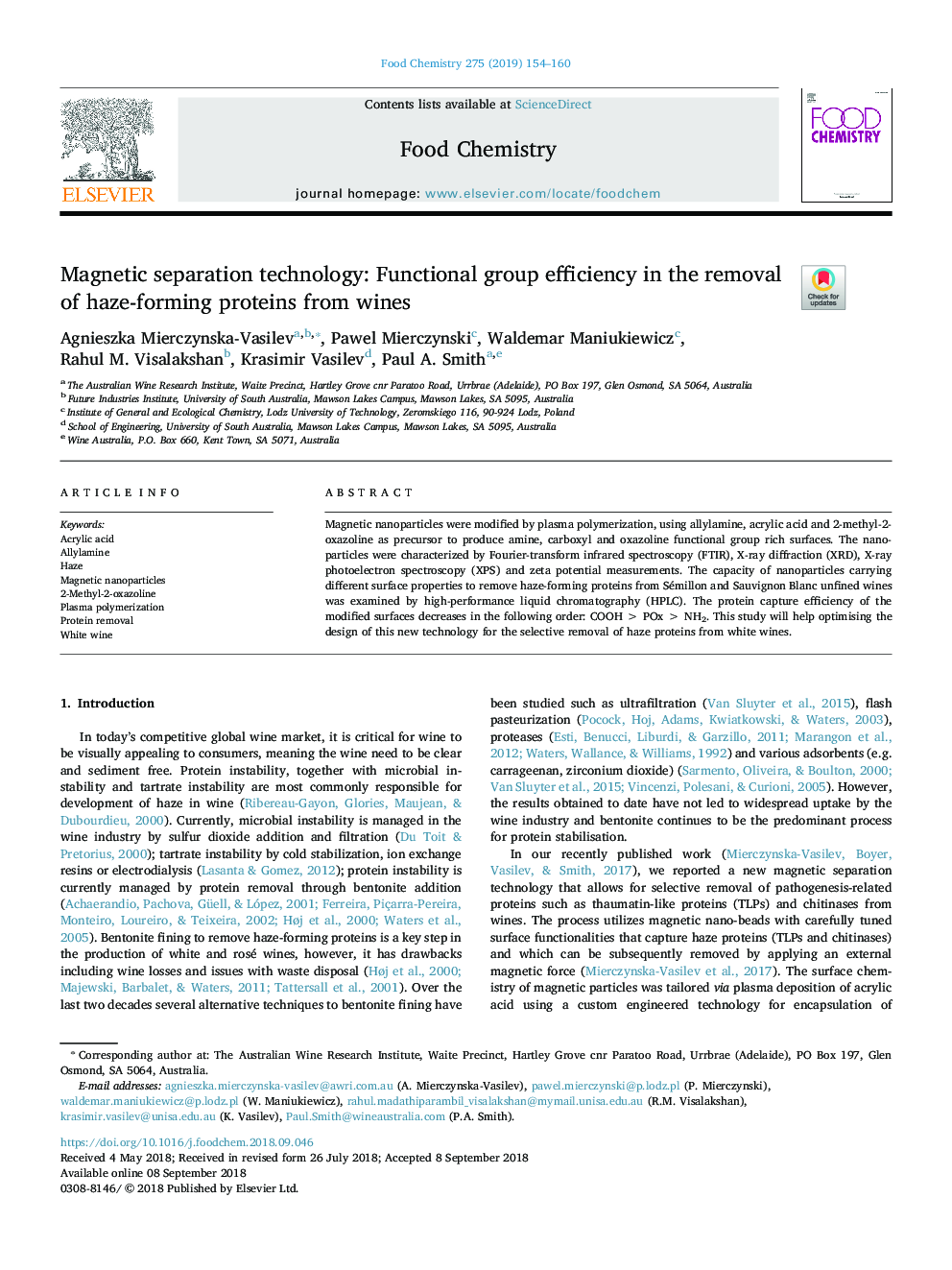| Article ID | Journal | Published Year | Pages | File Type |
|---|---|---|---|---|
| 10154416 | Food Chemistry | 2019 | 7 Pages |
Abstract
Magnetic nanoparticles were modified by plasma polymerization, using allylamine, acrylic acid and 2-methyl-2-oxazoline as precursor to produce amine, carboxyl and oxazoline functional group rich surfaces. The nanoparticles were characterized by Fourier-transform infrared spectroscopy (FTIR), X-ray diffraction (XRD), X-ray photoelectron spectroscopy (XPS) and zeta potential measurements. The capacity of nanoparticles carrying different surface properties to remove haze-forming proteins from Sémillon and Sauvignon Blanc unfined wines was examined by high-performance liquid chromatography (HPLC). The protein capture efficiency of the modified surfaces decreases in the following order: COOHâ¯>â¯POxâ¯>â¯NH2. This study will help optimising the design of this new technology for the selective removal of haze proteins from white wines.
Keywords
Related Topics
Physical Sciences and Engineering
Chemistry
Analytical Chemistry
Authors
Agnieszka Mierczynska-Vasilev, Pawel Mierczynski, Waldemar Maniukiewicz, Rahul M. Visalakshan, Krasimir Vasilev, Paul A. Smith,
